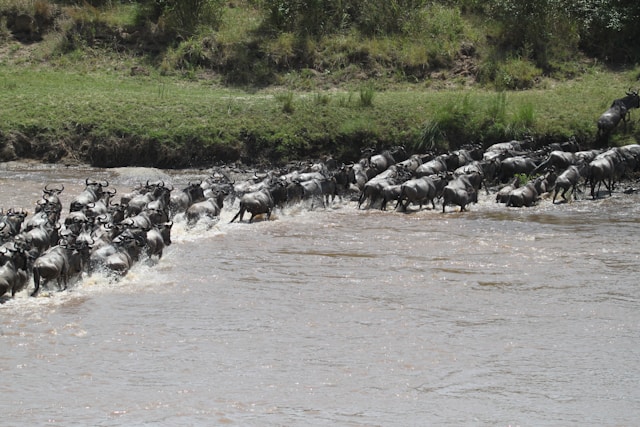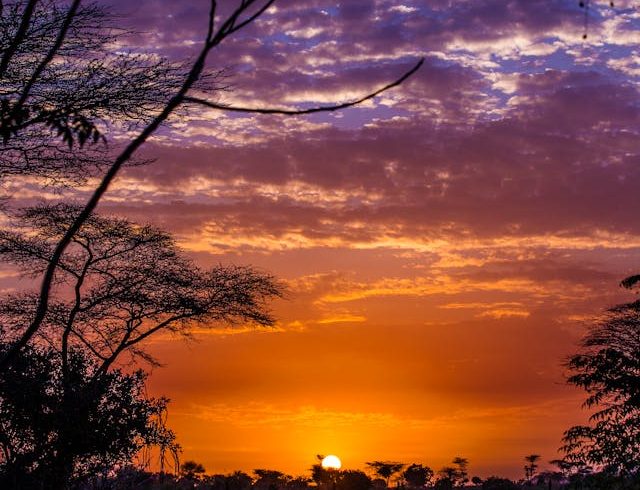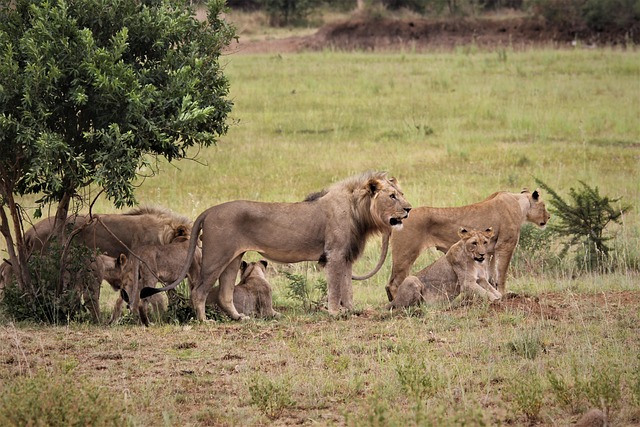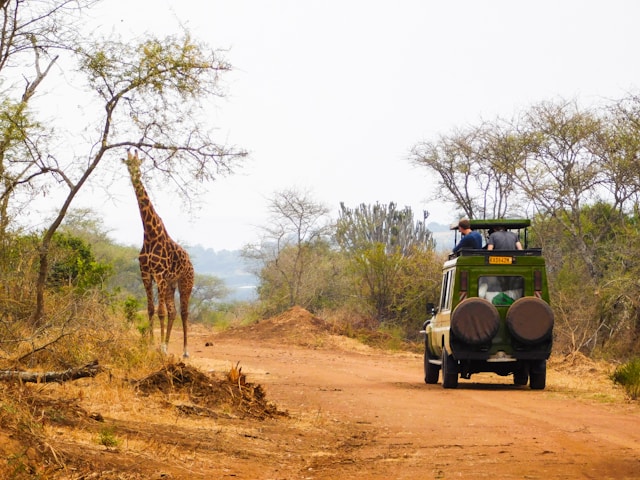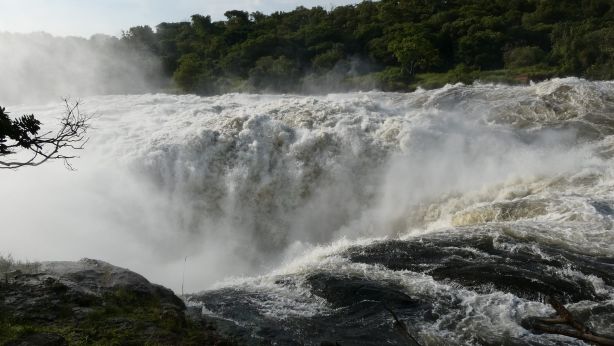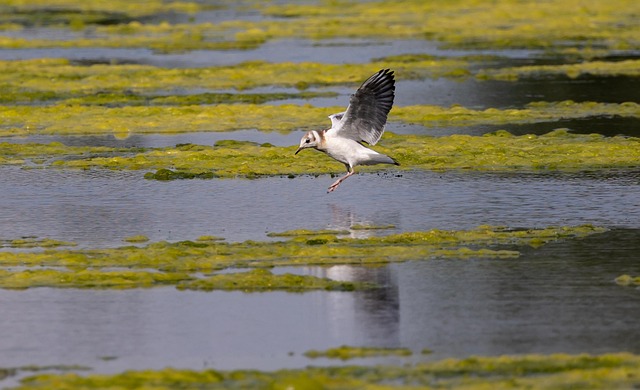Ultimate Guide to Tanzania Mid-Range Safari (2026 / 2027 / 2028)
Planning a Tanzania mid-range safari can feel overwhelming — from choosing the right route to estimating costs, picking safari camps, and knowing what to pack. In this guide, we break it all down. Whether you’re travelling in 2026, 2027 or 2028, this is your definitive blueprint: sample itineraries, insider tips, cost estimates, FAQs, and expert guidance to ensure your mid-tier safari is as spectacular as it is smart.
Quick Answers
-
What is a mid-range safari in Tanzania? A safari combining comfort and value: 3–4 star lodges or permanent tented camps, private safari vehicles, expert guides, full-board meals, park fees, and internal transfers.
-
Typical cost (2026–2028): Approx. $200–$400 USD per person per day (excluding international flights).
-
Best months to visit: June to October (dry season), December to March (short rains)
-
Top itinerary idea: 7–10 days Northern Circuit (Arusha → Tarangire → Serengeti → Ngorongoro) with optional additions like Ruaha or Nyerere.
Why Choose a Mid-Range Safari in Tanzania
A mid-range safari hits the sweet spot between “budget” and “luxury.” Here’s why many travelers prefer it:
-
Good balance of comfort, value, and authenticity
-
Comfortable lodges or permanent tented camps (not bare-bones camping)
-
Private vehicles and experienced guides
-
All essential services included: meals, park fees, internal transfers
-
Flexibility to upgrade certain components
For many, a mid-range safari delivers excellent wildlife viewing experiences without the luxury price tag.
Explore our Tanzania mid-range safari packages
When to Go & Wildlife Seasons
Best Time (Dry Season & Short Rains)
| Season | Months | Why It’s Good for Safari |
|---|---|---|
| Dry Season | June – October | Easier game viewing (animals concentrate near waterholes), good roads, great weather |
| Short Rains | December – February / March | Fewer tourists, lush scenery, newborns in the wildebeest herds |
The Great Migration peaks vary by region: in southern Serengeti (Ndutu) in Jan–Mar, moving north by June–Sept.
Always check regional movement patterns.
Off-Peak / Green Season (Long Rains)
May, November — roads may be tricky, but rates may drop and scenery is beautiful. Good for experienced travelers.
Read our blog: “Best time to visit Tanzania”
Tanzanian Safari Circuits & Regions
Northern Circuit (most popular for mid-range safaris)
-
Arusha (gateway town)
-
Tarangire National Park — known for elephants and baobabs
-
Lake Manyara — birdlife, tree-climbing lions
-
Ngorongoro Crater — dense wildlife in a volcanic caldera
-
Serengeti National Park — endless plains, predator action, Great Migration
-
Optional: Lake Eyasi / cultural visits
This is the classic route for first-time Tanzania safari travelers.
Southern / Off-the-Beaten-Path Extensions
-
Ruaha National Park — wild, fewer tourists, excellent walking safari options
-
Nyerere National Park (former Selous) — vast area, river safaris, game diversity
-
Mahale / Gombe — for chimpanzee trekking
-
Katavi — remote, dramatic wildlife concentrations
Use these if you have more time or want a more exclusive feel.
Sample Itineraries (Mid-Range)
7-Day Northern Circuit Sample
| Day | Route / Activity |
|---|---|
| Day 1 | Arrive Kilimanjaro / Arusha, overnight |
| Day 2 | Tarangire National Park (game drive) |
| Day 3 | Lake Manyara + cultural visit |
| Day 4 | Ngorongoro Crater day trip |
| Day 5 | Travel to Serengeti, afternoon game drive |
| Day 6 | Full-day Serengeti safari |
| Day 7 | Return to Arusha / fly out |
10-Day Northern + Southern Mix
Add 3 days: after Serengeti, fly or drive to Ruaha → game drives → exit via Dar es Salaam.
14-Day Grand Circuit
Northern → Central → Southern → Beach (Zanzibar) extension.
Note: Always tailor route to wildlife season and your arrival / departure logistics.
Cost Estimates & Budget Breakdown
Approximate Daily Cost
-
USD $200–$400 per person per day (mid-range, 2026–2028 estimates)
-
Inclusions: accommodation, meals, park fees, internal transfers, guide, vehicle
-
Exclusions: international flights, visas, tips, optional extras
Cost Breakdown Example for 7-Day Trip
| Item | Estimated Cost (USD) |
|---|---|
| Accommodation & meals | $80–$150 / day |
| Park entry fees & conservation | $50–$100 / day |
| Driver / guide & vehicle | $40–$80 / day |
| Internal transfers / flights | $100–$300 total |
| Misc (drinks, tips, extras) | $20–$50 |
Always ask your tour operator for a clear breakdown of inclusions and hidden costs.
What’s Included vs Excluded (Mid-Range Safari)
Typically Included
-
Lodging (3–4 star lodges or tented camps)
-
All meals (breakfast, lunch, dinner)
-
Drinking water at camps
-
Park entrance / conservation fees
-
National guide & private vehicle
-
Transfers between camps or airstrips (if included)
-
Local taxes
Usually Excluded / Optional
-
International flights
-
Visa / immigration fees
-
Travel / medical insurance
-
Tips / gratuities
-
Alcoholic beverages
-
Laundry
-
Optional activities (balloon ride, hot air balloon, cultural visits)
-
Internal charter flights (unless stated)
Always request a “what’s included / excluded” by your tour provider and compare apples to apples.
Choosing Camps, Lodges & Tented Camps
What to look for in a mid-range camp
-
Comfortable tent or permanent structure (ensuite bathroom, mosquito nets)
-
Good location (within or adjacent to reserves)
-
Views and privacy
-
Food quality and service
-
Responsible practices (eco, waste, local staff)
-
Reliable reviews & ratings
Sample Camps / Lodges (mid-range level)
-
In the Serengeti region: mid-tier tented camps along migration route
-
In Ngorongoro: lodges on crater rim or in the conservation area
-
In Ruaha / Nyerere: camps with walking safari access
Check recent reviews on TripAdvisor & SafariBookings
How to Book & Tips
-
Use reputable local or global safari agents with strong reviews
-
Get multiple quotes (2–3) for comparison
-
Ask for full itineraries and cost breakdowns
-
Request flexibility and contingencies (e.g. if roads are bad)
-
Book early, especially for peak season (June–Oct)
-
Confirm all logistics: arrival transfers, airstrips, visa, insurance
-
Look for small group vs private depending on your preference
Internal link suggestion: link “safari operators in Tanzania” or your own package pages.
Travel & Logistics
Getting There & Between Parks
-
International arrival: Kilimanjaro International (JRO) or Dar es Salaam
-
Domestic connections: light aircraft charters or overland drives
-
Some routes require small-plane hops to remote airstrips
-
Reserve transfer times: allow buffer for delays
Border / Visa Formalities
-
Many nationalities need visas (e.g. Tanzania E-Visa)
-
Check requirements well in advance
Health, Safety & Permits
-
Malaria prophylaxis recommended
-
Vaccinations: Yellow Fever (if required), routine ones
-
Travel insurance mandatory
-
Check for regional permits (e.g. for Tanzanian conservation areas)
What to Pack & Health Tips
Packing List Essentials
-
Lightweight, neutral-colored safari clothing
-
Long sleeves & pants for evenings / sunsets
-
Good hiking shoes
-
Wide-brim hat, sunglasses, buff / scarf
-
Binoculars, camera + extra batteries / memory cards
-
Rain jacket (especially in short rains)
-
Sunscreen, insect repellent
-
Basic first-aid kit
-
Travel adapter
Health & Safety Tips
-
Stay hydrated
-
Limit sun exposure, wear sunscreen
-
Listen to your guide about wildlife safety
-
Avoid night driving / walking without guide
-
Respect local customs and culture
Wildlife Highlights & What to Expect
-
Big Five: lion, elephant, leopard, buffalo, rhino
-
Predator action: cheetah, wild dog, hyena
-
Great Migration: wildebeest, zebra, gazelle
-
Birdlife: over 500 species
-
Unique species: tree-climbing lions (in Someara), hippos, hippo pools, crocodiles
-
Landscapes: savannah, acacia woodlands, crater, rivers, kopjes
Use vivid descriptions and let your content paint a picture.
For more on Tanzania’s national parks, see the official Tanzania National Parks (TANAPA) site
FAQs
Q: How much does a mid-range safari in Tanzania cost in 2026?
A: Expect USD $200–$400 per person per day, depending on group size, season, route, and lodging standard.
Q: Is Tanzania safe for safari travelers?
A: Yes. Tanzania is generally safe for tourists; take standard precautions, follow guide advice, and avoid risky areas at night.
Q: What is included in a mid-range safari package?
A: Lodging, meals, park fees, guide, vehicle, transfers and taxes are typically included. Exclusions are international flights, visas, tips, and optional extras.
Q: Which months are best for wildlife viewing?
A: June–October (dry) and December–February (short rains). The Great Migration’s timing varies by region, so plan accordingly.
Q: Can I upgrade parts of my mid-range safari?
A: Absolutely. You can upgrade lodging, internal flights, private guides, or add balloon safaris, cultural visits, etc.
Ready to Book?
Plan your Tanzania mid-range safari with confidence. Request a free, no-obligation quote now and let our experts craft your ideal 7–14 day adventure.
- Trusted Operator: Paradise Africa Safari is a licensed and experienced tour operator.
- Flexible Booking: Pay 30% deposit & balance on arrival.
- WhatsApp Support: Instant assistance via WhatsApp +254 728 567 308

